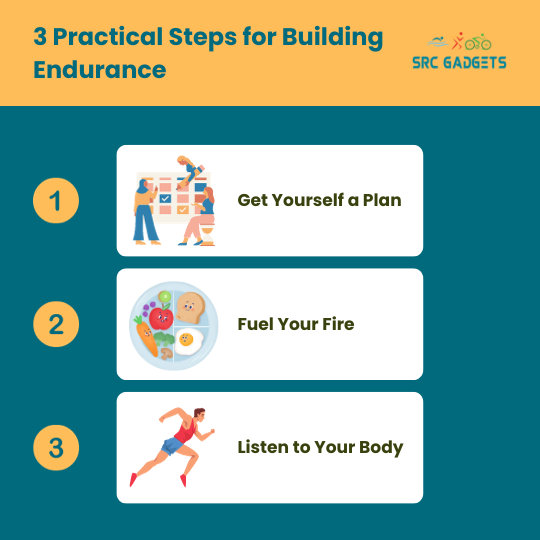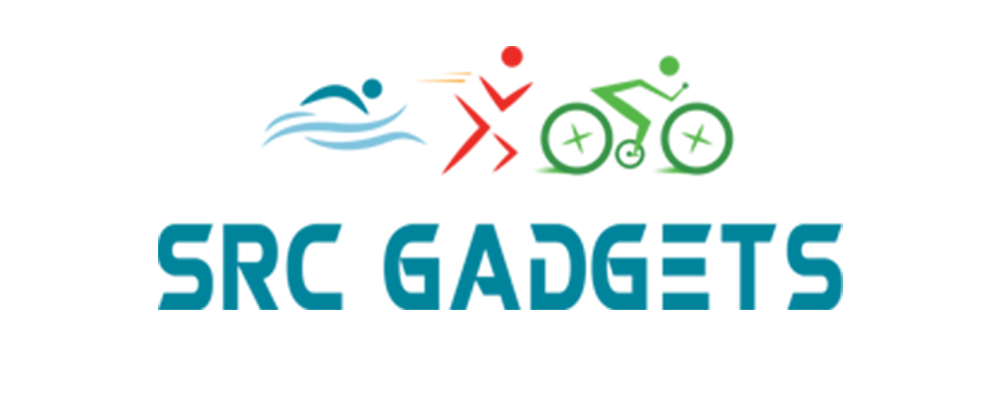How Long Does It Take to Build Endurance? Tips and Strategies for Success
When it comes to boosting your running stamina, there’s a saying we’ve all heard – “Rome wasn’t built in a day.” In a world where quick fixes are all the rage, especially in the era of texting and social media, you have to understand that improving your endurance is a journey that requires time, effort, and a solid plan.
This article is your guide to the world of enhancing running endurance, where I will share some down-to-earth tips and strategies to help you on your quest, whether you’re just starting or you’re a seasoned runner looking to conquer longer distances.
Getting to Know Endurance Building
So, what’s the secret sauce for improving your running endurance? Before we dive into the nitty-gritty of training, let’s understand the basics of endurance building. In the context of an Ironman, endurance signifies your capability to sustain energy and stamina across swimming, biking, and running. It’s crucial for mastering challenging triathlons like the Ironman.”
Building endurance revolves around beefing up two main things: muscular endurance and cardiovascular endurance.
Muscular endurance is all about your muscles keeping up the pace without throwing in the towel. It’s crucial for running because it keeps injuries at bay and ensures you maintain that perfect running form.
Cardiovascular endurance, on the other hand, is all about how efficient your heart and lungs are at delivering oxygen to your muscles during exercise. This aspect is a big deal for long-distance running, determining how long you can keep going without panting like a steam engine.
To build both types of endurance, you need a combo deal of strength training and aerobic exercises. Strength training gives your muscles a boost, while aerobic exercise like running helps your heart and lungs get into the action.
Boosting Endurance through Running
For beginners, a pressing question often is, “How long should I run to enhance endurance?” The answer varies based on your current fitness level and your ultimate objectives.
For the newbies, take it slow and steady. Begin with shorter runs like 20 to 30 minutes at a comfy pace, three to four times a week. Over time, crank up the time by 10-15 minutes per week.

As you advance in your Ironman training, throw in one long run each week. These prolonged sessions are pivotal in building the stamina required for the Ironman triathlon distances. Start with a distance that challenges you but doesn’t make you want to quit, and then gradually crank it up. The aim is to get to a point where running for a long time feels like a walk in the park.
Now, should you run every day? Well, yes and no. You can build endurance by running every day, but you should not overdo it. Running without giving your body a breather can lead to over-training and injury. However, mix in some rest days where you can opt for gentler activities like cycling or swimming. It keeps you in the game without wrecking your muscles and joints.

And here’s a little secret: long runs don’t have to be a race against time. When training for endurance, especially for those lengthy races like marathons, it’s perfectly fine to take things slow. In fact, long runs should be slower than your race pace.
During long runs, running more slowly enables you to concentrate on increasing your stamina and teaches your body to use stored energy more efficiently. Plus, it lowers the risk of burning out during training. For your long runs, aim for a pace that’s at least 30-60 seconds per mile slower than your expected race pace. This slower tempo will let you go the distance without feeling like you’re about to collapse.
Maintaining Your Endurance
You’ve done the hard work to build up your running endurance, But did you realize that if you don’t keep up the effort, it could disappear? The rate at which you lose endurance can vary, but as a general rule, you might start feeling the decline after two weeks of inactivity.

This decline can happen for a bunch of reasons, like your cardiovascular fitness taking a nosedive, muscles giving up the fight, or your running efficiency going out the window. Even during off-season and rest periods, you should keep running or doing aerobic exercise regularly to keep your progress intact.
Now, running longer without feeling like a deflated balloon is a common goal for endurance enthusiasts. Running cannot last forever wit
hout you getting tired, you can extend your running time and delay fatigue by using these tricks:
Hydrate and Fuel:
Keep your body well-hydrated and feed it the right nutrients during long runs. Dehydration and low blood sugar can zap your energy, so carry water and energy snacks to keep the tank full.
Pace Yourself:
Don’t sprint out of the gate. Start at a comfy pace and gradually pick up the speed as your body warms up. A steady pace saves energy and lets you run longer.
Breathe Right:
Pay attention to your breathing. Take long, deep breaths to ensure that your muscles receive the oxygen they need. Practice breathing patterns to fend off fatigue.
Mind Games:
Long-distance running is as much a mental game as a physical one. Stay focused on your goals, pep talk yourself, and break the running into smaller sections, manageable bits to stay motivated.
Interval Training:
Mix some interval training. That means alternating between sprinting and easy jogging. It’s like a turbo boost for your endurance.
Take It Slow and Steady:
When you’re increasing your mileage or running time, do it gradually. Fast and aggressive pushing might result in tiredness and injuries.
And yes, jogging is a legit way to build up your stamina. It’s basically slow-paced running that lets you build your cardiovascular endurance without pushing yourself to the brink.
For those just starting or getting back into running, jogging is your best buddy. It’s gentler on the body and sets the stage for more intense training as you get into the groove.
Practical Steps for Building Endurance
Building running endurance is not a wild guessing game. It’s a systematic process that involves consistent training, smart eating, and proper recovery. Here are three steps to supercharge your endurance-building journey:
Step 1: Get Yourself a Plan:
Start with a well-thought-out training plan. This plan maps out your running schedule, including how long and how hard each run should be. It should match your fitness level and your endurance goals. When crafting your plan, remember:
Step 2: Fuel Your Fire:
Nutrition and hydration are your endurance-building allies. Your body craves a balanced diet with carbs for energy, protein for muscle repair, and healthy fats for overall health. During long runs, quench your thirst with water or sports drinks and fuel up with energy gels or chews to keep the engine running.
Step 3: Listen to Your Body:
Don’t ignore the signals your body sends. If you feel tired, sore, or in pain, pay attention to it. Rest when needed, and don’t hesitate to seek professional advice if things go south. Remember, rest and recovery are like your body’s power-up moments don’t skip them.
If you’re gearing up for your first 5K or half marathon, here are some special nuggets of wisdom:

Setting Realistic Goals
Is it doable for your average Joe or Jane to go from couch potato to marathon-ready in a mere two months? Well, it’s a tempting idea, but let’s keep it real.
While substantial progress is possible in two months, especially if you’re not starting from square one, becoming a seasoned runner needs time and dedication. Here are a few factors to consider:
Starting Line:
Your fitness starting point is a big deal. If you’re somewhat active and have a fitness base, the transition to running will be smoother. But if you’ve been in hibernation mode, take it slow and steady.
Watch Out for Injuries:
Rushing into intense training without prep increases the injury risk. Stress fractures, muscle strains, and tendonitis are common when you push too hard too soon.
Keep It Sustainable:
Long-term success in running relies on sustainable training. Rapid changes can often result in unsustainable levels of effort, which may lead to burnout.
Instead of aiming for a lightning-fast makeover, set short-term goals that match your long-term dreams. Use the first two months to build a solid endurance foundation, and gradually increase your training intensity.
Conclusion:
Ultimately, building running endurance is more like a marathon than a sprint. Patience, dedication, and a well-crafted plan are your trusty companions. Understand the basics of endurance, tailor your plan to your fitness level, and sprinkle in some nutrition, hydration, and rest.
Whether you’re eyeing that 5K finish line or have your sights set on an Ironman, consistency, and smart training are your allies. By setting achievable goals and avoiding shortcuts, you’re on the path to a successful endurance-building adventure. Lace up your running shoes, hit the pavement, and begin your exhilarating journey. Your future self will thank you for it.

John. C
I am a writer by passion and a triathlete coach profession. In his free time, he swims, runs, cycles, and helps newbie athletes to achieve their goals.



